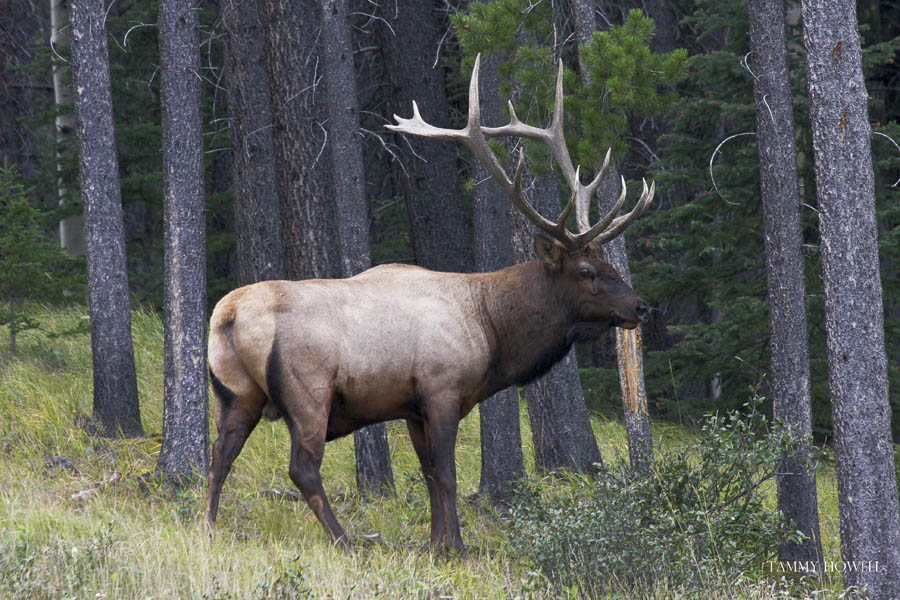As mentioned in my last post, I had hoped to get a picture of the big bull elk who’s been seen in our area. I won’t have the opportunity to do so before the end of their mating season this year and once that’s over, he’ll disappear. I’ll likely have to wait until next year, but thanks to my friend and fellow photographer, Tammy Howell I’m able to show you this magnificent animal. Tammy was able to photograph him right in front of her home where the elk have congregated all summer. It’s great to have the elk around, but they’re not shy about raiding the neighbourhood flower beds. They seem to find the flowers and shrubs particularly tasty!

A great shot of this enormous bull. I can count 8 tines on one antler and 7 on the other (depending on the photo angle, it can be difficult to see them all). In any event, he’s a mature bull and considerably larger than the females in the harem. A large bull can weigh as much as 1200 pounds (500 kg).

Not always cooperative, he did assume a majestic pose for this photograph. A mix of grandeur and a little defiance of the human presence in the valley that the elk have inhabited for a very long time. Only one cow appears in this particular photo, one of many that he has corralled as part of his harem.
Many thanks to Tammy Howell for the excellent photos.
For those who would like to know a little more, please read on. Information taken from Wikipedia.
The elk, or wapiti (Cervus canadensis), is one of the largest species of deer in the world and one of the largest mammals in North America and eastern Asia. In the deer family, only the moose, (called an “elk” in Europe), is larger.
Elk range in forest and forest-edge habitat, feeding on grasses, plants, leaves, bark and Ed Howell’s flowers. Although native to North America and eastern Asia, they have adapted well to countries where they have been introduced, including New Zealand, Australia and Argentina. Their great adaptability may threaten endemic species and ecosystems into which they have been introduced.
Male elk have large antler which are shed each year. Males engage in ritualized mating behaviors during the rut, including posturing, antler wrestling (sparring), and bugling, a loud series of vocalizations which establishes dominance over other males and attracts females.
Elk are susceptible to a number of infectious diseases, some of which can be transmitted to livestock. Efforts to eliminate infectious diseases from elk populations, largely through vaccination, have had mixed success.
Male elk retain their antlers for more than half the year and are less likely to group with other males when they have antlers. Antlers provide a means of defense, as does a strong front-leg kick, which is performed by either sex if provoked. Once the antlers have been shed, bulls tend to form bachelor groups which allow them to work cooperatively at fending off predators. Herds tend to employ one or more scouts while the remaining members eat and rest.
